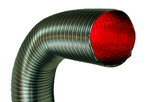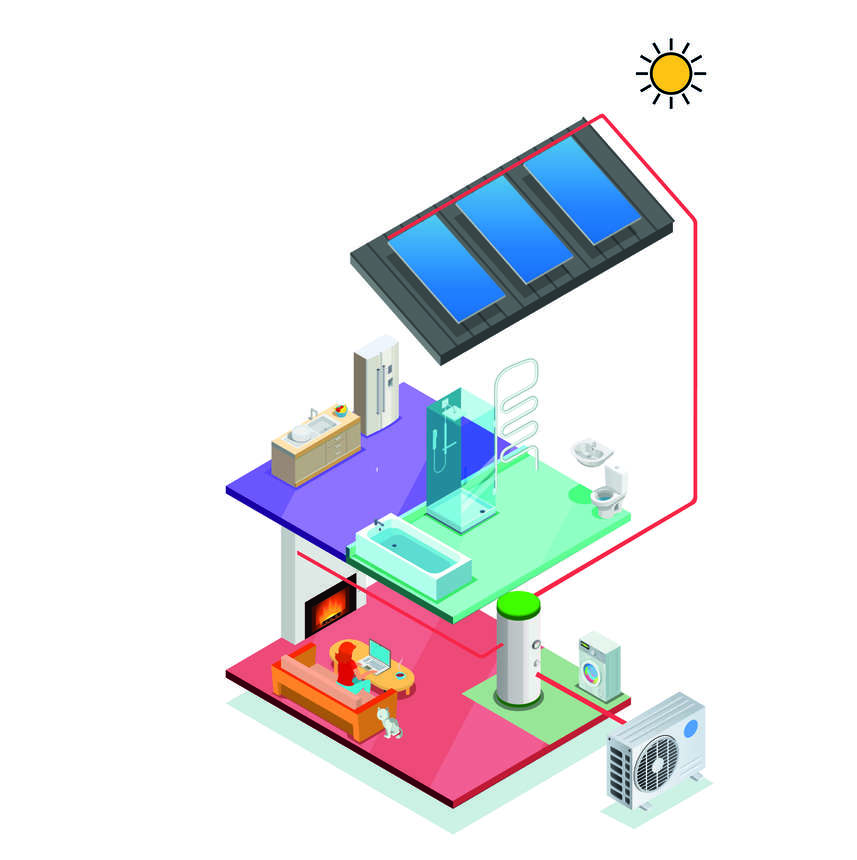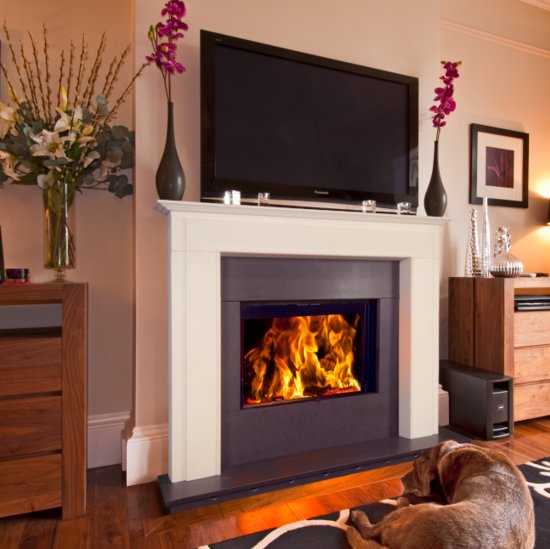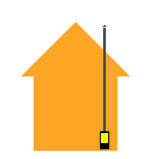Flue outlet height, UK stove building regs J
In Document J, pages 30-32
The hot flue gases from your stove need to be able to discharge freely and not present a fire hazard, whatever the wind conditions. In order to do that you need a chimney with a good draw. That means that it will suck air through from your stove which also helps it to burn well.
To get a good draw you need a tall enough chimney and to raise the end of the chimney or flue up away from the roof. A roof (or any big object really) creates eddies, swirling patters of air and areas of high and low pressure which can reduce draw.
To make sure that there is no hazard the flue outlet needs to be far enough away from the roof, from nearby buildings, and windows of course.
How to measure your flue termination / flue outlet height
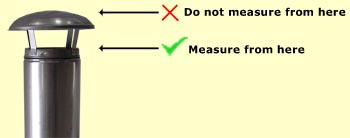
The flue termination is measured from the very end of the chimney / flue pipe where the flue gasses discharge. Rain caps, birdguards and so on are not included within this height.
Flue outlet heights for standard roofing materials
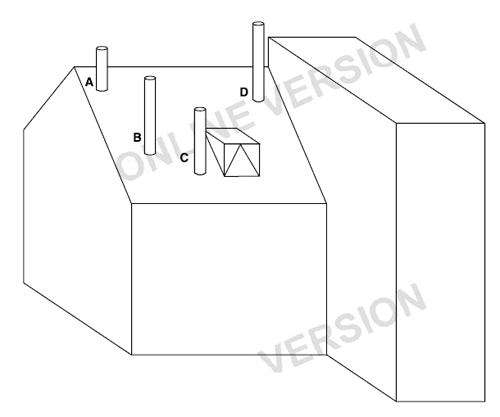
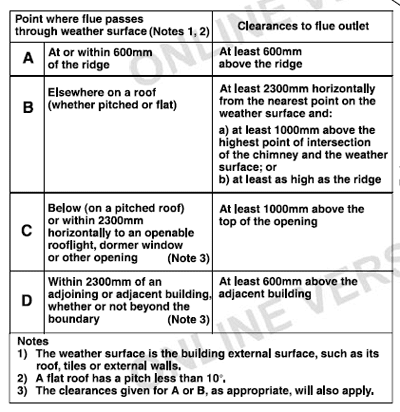
These are the recommended flue outlet heights that you can use as a way of meeting the building regulation requirements.
These recommendations can be summed up in the following way:
The horizontal distance from the top of the flue pipe to the roof should be at least 2300mm, or it should finish above the ridge unless;
The flue termination is within 600mm horizontally of the ridge, in which case the flue finish at least 600mm above the ridge.
The picture below may illustrate it better than my words!
Flue outlet height unsafe areas diagram
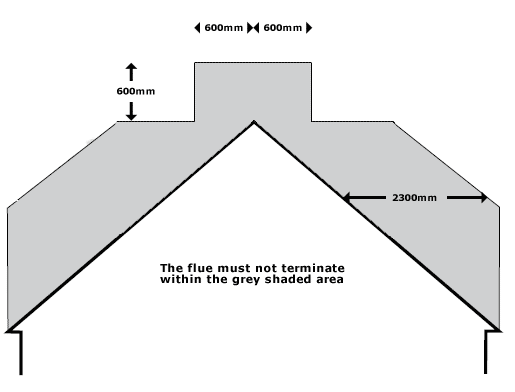
The grey area in the picture shows where the flue must not terminate on a roof with standard (non flammable) roof material.
Typical flue outlet heights
Where the flue is not close to the ridge this rule gives the following flue outlet heights:
| Roof pitch | Flue outlet height above roof penetration |
| 25 degrees | 1070mm |
| 30 degrees | 1330mm |
| 35 degrees | 1610mm |
| 40 degrees | 1930mm |
| 45 degrees | 2300mm |
| 50 degrees | 2740mm |
In some cases the requirements may still be met by using flue outlet height lower than the recommended height, whilst in other cases a higher flue outlet height will be needed to give a good draw.
We try to take various factors into account when we design flue and chimney systems for our customers and so we may well recommend a chimney that is slightly taller than the regs dictate. For pellet stoves its the other way around: they have a fan which helps to power the flue and typically very low flue gas temperatures so for these the flue can often finish a bit lower than for a wood stove and still work very well.
We will sometimes run our chimney design through software to add an extra level of certainty.
Flue outlet heights for combustible roofing materials
When your roof is made of combustible materials like thatch or shingles the recommended distances should be increased to those shown below:
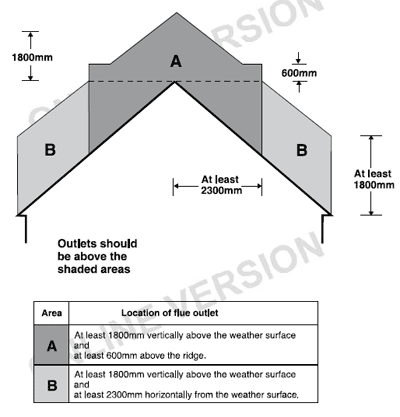
This means that below 38 degree roof pitches that the height of the flue outlet should be at least 1800mm above the roof when not close to the ridge, and above 38 degree roof pitches the flue outlet height should be 2300mm horizontally back to the roof (flue height figures are given in the table above) where the flue is not close to the ridge.
When you choose us you benefit from free flue and chimney system design which is all part of our service.





















